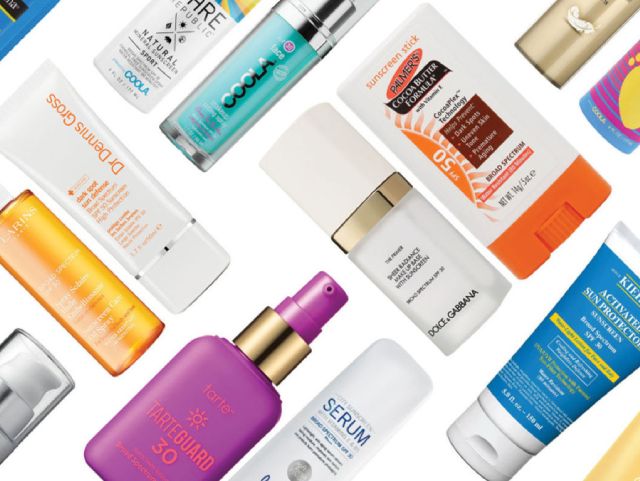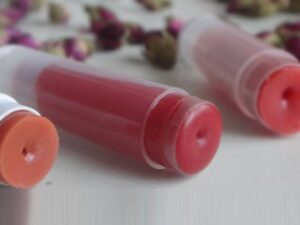1. Why does our body need sunlight?
Our bodies require a certain amount of natural sunlight to produce Vitamin D, in order to keep our bones strong and support our immune system. Sunlight also has great healing properties, protects against dementia and has psychological benefits as well. In fact, sun exposure is beneficial in the treatment of certain immune mediated skin ailments like Psoriasis and Vitiligo.
2. What is Sun Protection Factor (SPF)?
SPF is the ratio of the minimal ultraviolet dose required to produce skin redness with and without a sunscreen. For example, if it takes 10 minutes for your skin to become sunburned without any sunscreen, then by using a sunscreen with SPF rating 15, you could stay out in the sun 15 times longer (i.e. 2.5 hours). This is provided, of course, that you have applied the sunscreen properly and in adequate quantity and thickness to receive the full SPF benefit.
In terms of percentages, SPF 15 blocks approximately 93% of all incoming UVB rays, SPF 30 blocks 97% and SPF 50 blocks 99% of incoming ultraviolet radiation.
3. What are the various kinds of sunscreen available in the market?
Sunscreens can broadly be divided into two categories- Physical and Chemical.
Physical sunscreen works by deflecting or blocking the sun’s rays, therefore they must be the last layer to go onto your skin (if used along with moisturizers, serums, insect repellants etc. with the exception of makeup). They are far more stable and effective but they are thick, opaque and leave a white tint on the skin. Thus they are preferred by athletes but are inelegant for day to day use. Physical sunscreens contain ingredients like Zinc Oxide and Titanium Dioxide.
Chemical sunscreens contain filters which absorb the sun’s rays. These must be applied directly onto the skin in order to be activated. They’re cosmetically elegant but can cause skin irritation and eye watering in some individuals. Chemical sunscreens contain ingredients like Avobenzone, Oxybenzone and Salicylates.
Choose a sunscreen that offers both UVA and UVB protection (labelled Broad Spectrum). UVB radiation is the primary cause of sunburn and skin cancer. UVB radiation causes premature ageing and skin wrinkling.
4. How should I use my sunscreen?
Sunscreens must be applied 20-30 minutes before stepping out into the sun. Sunscreens do not stay effective for more than 3 hours, so reapply in case you are out in the sun for longer hours. Water Resistant sunscreens maintain their SPF level after 60-80 minutes of water (or sweat) exposure. There is no such thing as a “water-proof” sunscreen. This would be false labeling. Do not forget to apply sunscreen to the back of your neck and your ears. Lips get sunburned a lot faster, so use an SPF containing lip balm.
UVA radiation can penetrate through monsoon clouds, get reflected off snow and sand, and can pass through water and glass as well. So sunscreens must be used on cloudy, rainy and snowy days as well.
5. How much sunscreen do I need to apply?
You will need to apply more than half a teaspoon (about 3ml) of sunscreen to each arm, 3ml for the face and neck, and just over 1 teaspoon to the chest, abdomen, back and each leg. This would mean if you’re out on the beach in your trunks, you would need about 33ml of sunscreen to cover the average adult body with a coating thick enough to reach the full SPF rating. And mind you, most sunscreen bottles contain only 50-60ml of sunscreen. Most of us find this impractical, and apply only 20-60% of the sunscreen needed. Using half of the required thickness of an SPF 30 sunscreen gives protection equivalent to a mere SPF 5.5. To that end, it might be wise to use sunscreens with a higher SPF rating.
The lighter your skin tone, the higher the SPF you need. When used correctly, SPF 15 is adequate for most Indians, SPF 30 for the beautiful Middle-Eastern olive skin, and SPF 50 for Caucasian skin.
6. Can sunscreens be used on children?
Sunscreens should not be used in infants less than 6 months old, as their skin is very thin and the chemicals of the sunscreen might get absorbed into their blood stream. In fact, it is best to avoid sunscreens altogether in kids below 2 years of age. Use a physical (or chemical-free) sunscreen for kids. Adults who are allergic to sunscreens can also switch to a physical sunscreen. Do not depend on sunscreens alone for protection. Use caps, umbrellas, shades and clothing to protect your child’s delicate skin. Avoid the mid-day sun between 11am to 4pm.
7. So how can I ensure that I’m getting enough Vitamin D?
15-20 minutes of sun exposure anytime between 7-9 am is all the sunshine your body needs to synthesize adequate amounts of Vitamin D. If you’re a Caucasian of Celtic origin, then even a few minutes of unprotected exposure in the sun might do the trick. For those with extreme sun sensitivity (usually a symptom of Lupus), Vitamin D oral supplements may be required to meet your nutritional needs.
Is widespread sunscreen usage leading to a D deficiency pandemic? No. Vitamin D deficiency is a pan-continental concern, but this is mostly due to a deficit in Vitamin D fortified foods. Also our darker skins have a harder time getting enough Vitamin D naturally, as the high levels of melanin in our skin absorbs most of the UV radiation. Milk, cheese, eggs and fatty fish are rich sources of Vitamin D.
8. Cream, lotion, gel or spray- which formulation should I choose?
Cream sunscreens are the most effective and are well accepted by those with dry or mature skin.
Water proof sunscreens are usually available in lotion formulations.
Gels, sprays, wet wipes and powder/mineral based sunscreens are lighter and do not block pores. They’re preferred by athletes and people with oily, sensitive or acne prone skin. Gels can also be used on hairy areas. Sticks are good to use around the eyes.
However sprays, wipes and powder based sunscreens are least effective in providing adequate sun protection. Inhalation of nanoparticles is an added concern. Sunscreen containing shampoos do not protect against premature greying of hair.
9. Will sunscreens really protect me from cancer and skin wrinkling?
Besides strict sun avoidance, broad spectrum sunscreens are your best bet against skin cancers, and are the first line of defense against premature ageing of skin. Anyone (irrespective of skin color) who spends more than 30 minutes a day (overall, not just at a time) in sunlight needs to use a sunscreen. If you’re a Caucasian, if you live in a tropical country, or have a personal or family history of skin cancer or pre-cancerous skin growths; then regular use of sunscreen is non-negotiable.
But do understand the limitations of sunscreens and do not let it give you a false sense of security in strong sunlight. I will once again stress upon the importance of reapplication, using adequate quantity of sunscreen, and additional sun protection measures (clothing, etc) to be truly protected from harmful radiation.
10. What role do antioxidants play in sun protection?
It is now understood that infrared radiation from sunlight and other sources (lamps, laptop screens, microwaves etc) can also cause skin damage by producing free radicals. Sunscreens do not provide any protection against infrared radiation which accounts for 54% of solar energy. IR radiation damages skin tissue by producing free radicals.
Antioxidants (applied locally or ingested orally) act as free radical scavenger and provides greater protection against radiation damage. More and more dermatologists are now recommending use of an antioxidant serum (containing Vitamin C, Vitamin E and/or Ferulic acid) along with sunscreen for added protection. Many newer sunscreens have added antioxidants, but these don’t work as well as chemical sunscreen can produce free radicals on their own!




